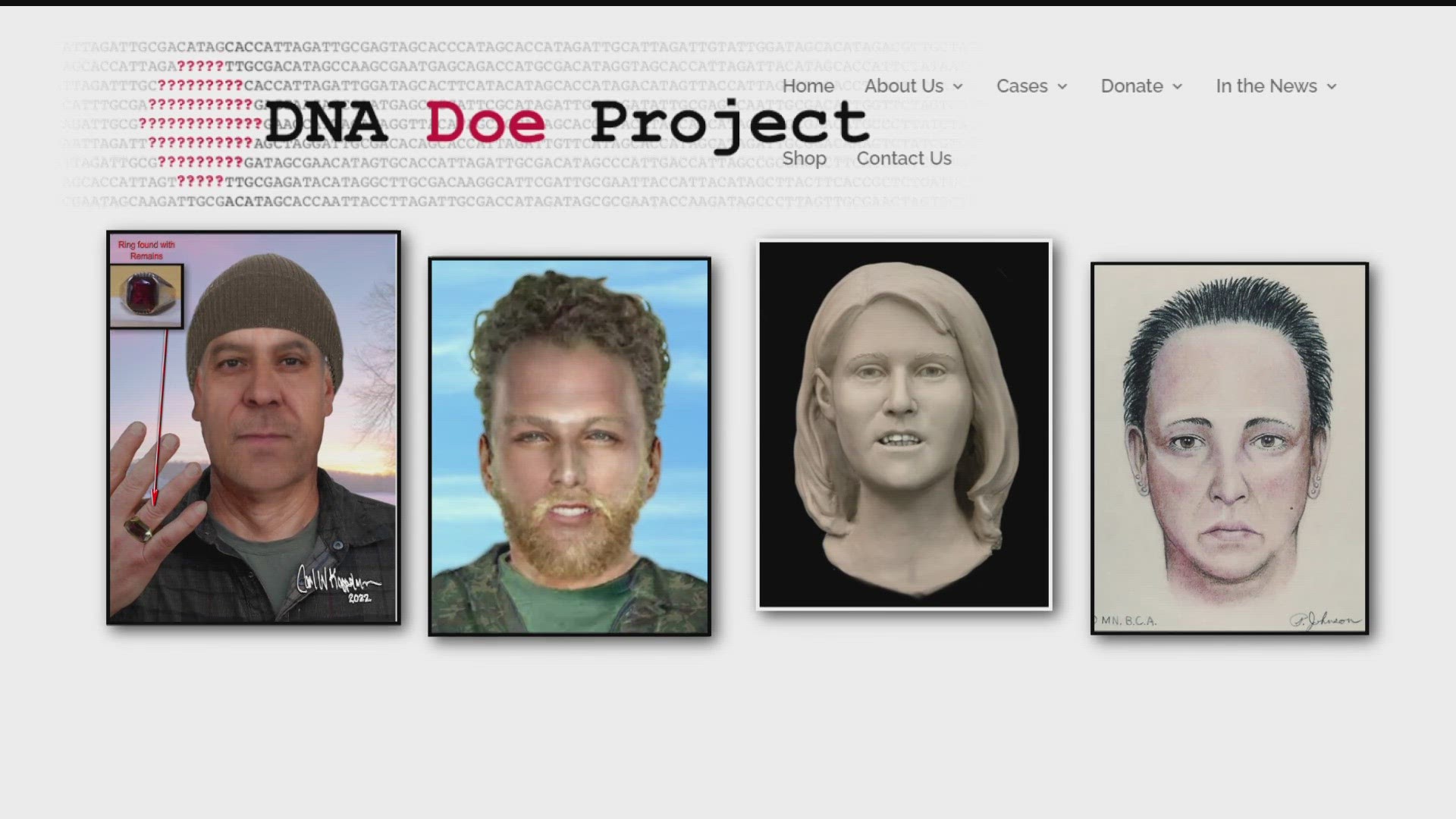MINNEAPOLIS — They are Minnesota's unnamed victims — John and Jane Does — bodies found but never identified. Remains that have been unidentified for decades.
Behind every John and Jane Doe, however, are real people seeking answers. For example, the family of Roberta Seyfert.
“We grew up together. So, to think she was missing was pretty scary,” said Roberta’s cousin.
Arline Seyfert lost her 10- and 14-year-old sons in California in 1958. When her husband, described in newspapers as a religious fanatic, led the boys into a gunfight with police before killing his one son and himself. The other boy and a police officer also died from gunshot wounds.
Arline moved her daughter Roberta to Minneapolis where she raised her in Dinkytown. But then in 1976, Roberta, not quite 22 years old, disappeared.
“Maybe we didn't talk about it a lot as years went by. But I just felt so bad for her mother,” said Roberta’s cousin. “I knew she had a troubled life just starting from losing her brothers and dad. I was afraid she maybe got mixed up with someone that wasn't good company and maybe hurt her. I guess that's maybe what I thought.”
What Roberta's cousin and the rest of the extended family didn't know is that just weeks later workers in the Mississippi River's Lilydale Marina near the Mendota Bridge found a badly decomposed body.
The coroner could tell it was a woman in her mid-20s and put out a description of her clothing. But no identification was made, and that body was named the "Lilydale Jane Doe."
Roberta's family never knew about the body or any potential connection.
Things changed in the last two years after the Ramsey County Medical Examiner enlisted the help of the DNA Doe Project.
Tracie Boyle and Megan Pasika are two of the unpaid volunteers who work for the nonprofit DNA Doe Project, using investigative genetic genealogy to identify John and Jane Does through DNA.
“I am hardwired to help people,” Pasika said.
“You're helping to bring a name back to someone who's been without a name for many, many years. Sometimes decades,” Boyle said.
“Knowing you have a loved one missing is something nobody should ever have to go through, Pasika said.
Pasika and Boyle worked together on the 1976 Lilydale Jane Doe -- plugging data from a DNA sample into two public DNA databases -- and began to create family trees based on distant connections.
“We were able to trace back to a man from Luxemburg who was born in the early 1800s,” Pasika said “The fun part was he had three wives and 20 children, so we had to build downlines for each of those children.”
They aren't allowed to use Ancestry DNA and 23 & Me -- the most popular sites -- but they're helped by public records such as newspaper archives.
That's how they learned Arline Seyfert's tragic story and that she had a daughter named Roberta.
“And we were able to confirm that our Doe was Roberta Seyfert,” Boyle said.
Providing answers to families is bittersweet.
“Because now you have a family that's in mourning. They have answers, yes, but now they have to begin the mourning process all over again,” Pasika said.
Besides Roberta Seyfert, in just the last couple of years, the DNA Doe Project has solved three other Minnesota mysteries, identifying Mary Jensen, found in Ramsey County in 1977; Louis Gattaino, found in Rock County in 1981; and James Everett, found in Rosemount in 2014.
They're still working on four other unsolved Minnesota cases, hoping to provide some closure.
“Some closure does mean something even if it's difficult,” she said.
Roberta's cousin, who's very spiritual, actually felt peace after Arline Seyfert, Roberta's mother, died. While deep in prayer, she heard Arline's voice:
“She spoke to me when I was in prayer and said, 'Robbie and the boys are with me.' I had a great peace,” she said.
She's very thankful for what these skilled genetic genealogists are willing to do for families like theirs.
“I find it really remarkable that these people donate their time. It's such an unselfish thing to do for people they don't even know. I just think it's wonderful. Very giving,” she said.
Unfortunately, even though Roberta has been identified, the authorities have no leads to follow up on and no way to investigate how or why she ended up in the Mississippi River. The cause and manner of death has always been undetermined.
Watch more local news:
Watch the latest local news from the Twin Cities in our YouTube playlist:

